In 2018 The Mind silently crept up on the board game industry and took it by storm. Read our review of The Mind to find out more about this Spiel des Jahres-nominated game.
Contents
The Mind Overview
In The Mind, 2 to 4 players work cooperatively to play Number cards from their hands in ascending order each level (or round).
The game begins rather simple since each player only has 1 card to play in level one. However, as players advance through the levels, they will have more and more cards in their hands.
Sound easy enough? The game’s catch, though, is that players aren’t allowed to communicate or share card information in any way.
If players progress through all the levels, they’ll win the game.
The Mind Components
The Mind comes with 120 cards that fall into one of the following categories:
- 100 Number cards, from 1 to 100
- 12 Level cards
- 5 Live cards
- 3 Throwing Star cards.
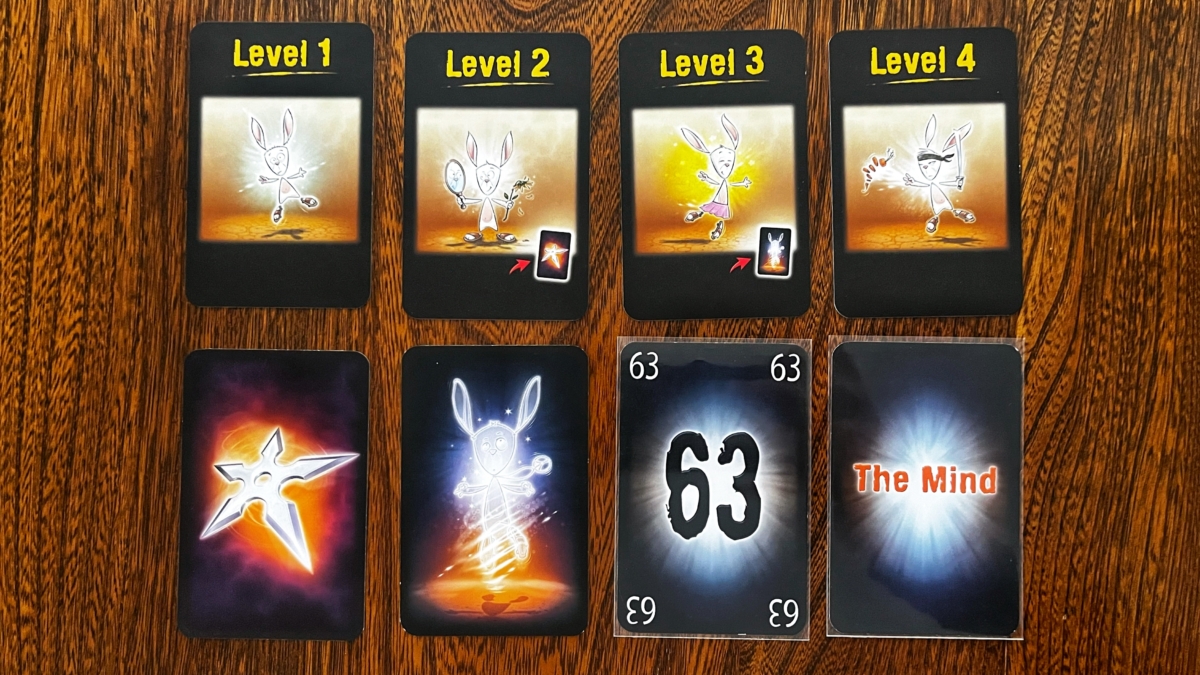
The different types of cards (Level, Throwing Star, Live, and Number).
How to Play The Mind
The Mind’s goal is simple: each level, everyone works cooperatively to play all the cards from their hands in ascending order to a single central pile.
There are no player turns in the game, so each player is free to play a card when they feel it’s the right moment. Knowing when that moment is, however, is the core of the game.
Setup
Depending on the player count, the team begins the game with a certain number of Live cards, and Level cards they need to complete to win the game.
The team also starts with 1 Throwing Star card.
All 100 Number cards are always used, regardless of the player count.
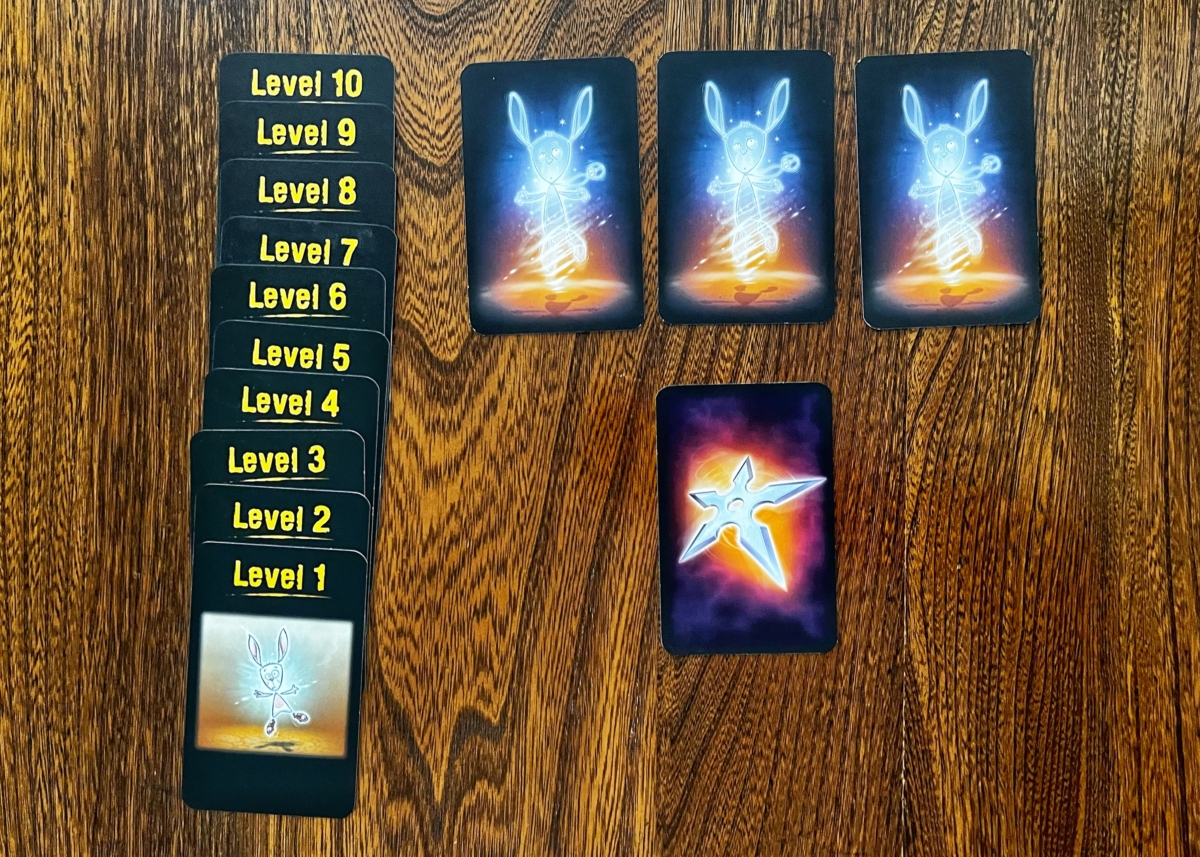
A game of The Mind set up for 3 players. The team begins with 3 Lives and 1 Throwing Star, and must play through Levels 1 to 10 to win.
To start a level, shuffle all 100 Number cards and deal each player the same number of cards as the current Level. For example, in level 1, each player is dealt 1 card, then 2 cards in level 2, etc.
Concentration
After players have received their hand of cards, it’s time to get ready to play. Each player signals this by placing the palm of one hand down on the table.
When everyone feels ready, they remove their hand from the table and the game begins.
During a level, if anyone needs to refocus, they may say, “Stop!” to interrupt play. When they’re ready to go again, everyone repeats the concentration process.
Playing Cards
There are no player turns in The Mind, so players are permitted to play cards from their hand to a single shared pile — in ascending order — as they please.
Since players aren’t allowed to show or communicate any information about the cards they’re holding, they must try to find a rhythm with their teammates to know when it’s best to play their cards.
Someone, for instance, holding a 70 won’t be as quick to play their Number card as someone with a 5.
In addition to not communicating, there are 2 more rules to follow when playing cards:
- You are only permitted to play 1 card at a time and
- You must play the lowest card you’re holding before playing any other card.
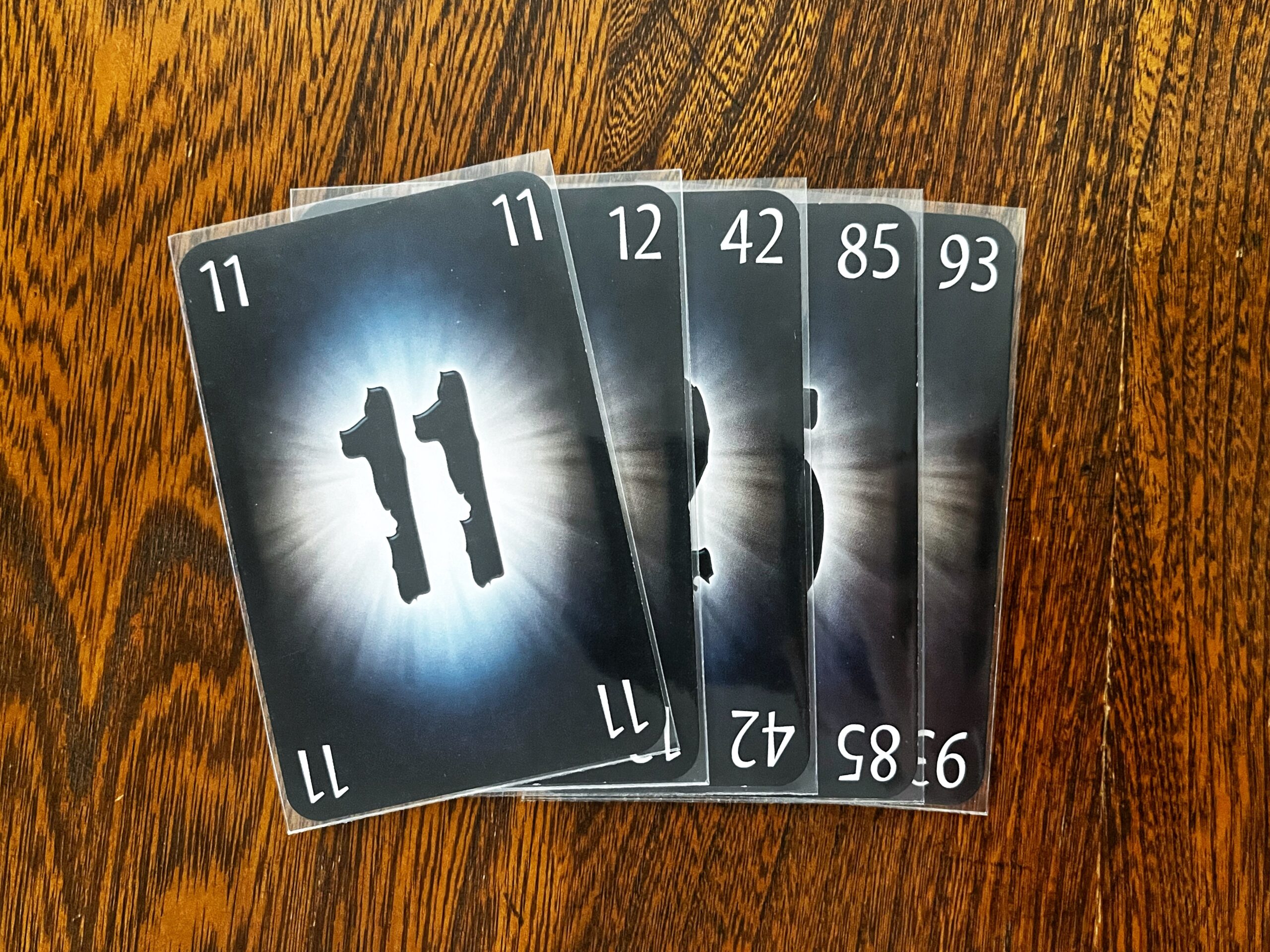
This player has 2 cards in sequential order, an 11 and a 12. They must play each card one at a time, beginning with their 11 — and they may not play their 12, 42, 85, or 93 cards until they’ve done so.
The team completes the current level if everyone has successfully played all their cards.
Depending on the level, they may also earn a reward (like a Live or Throwing Star card), as shown in the bottom right of the current Level card.

The team played all 9 cards and completed level 3. They earn a life as a reward (indicated on the Level 3 card) before progressing to Level 4.
Beginning a new level is like the initial setup: gather and shuffle all 100 Number cards and then deal each player a hand according to the current Level’s number.
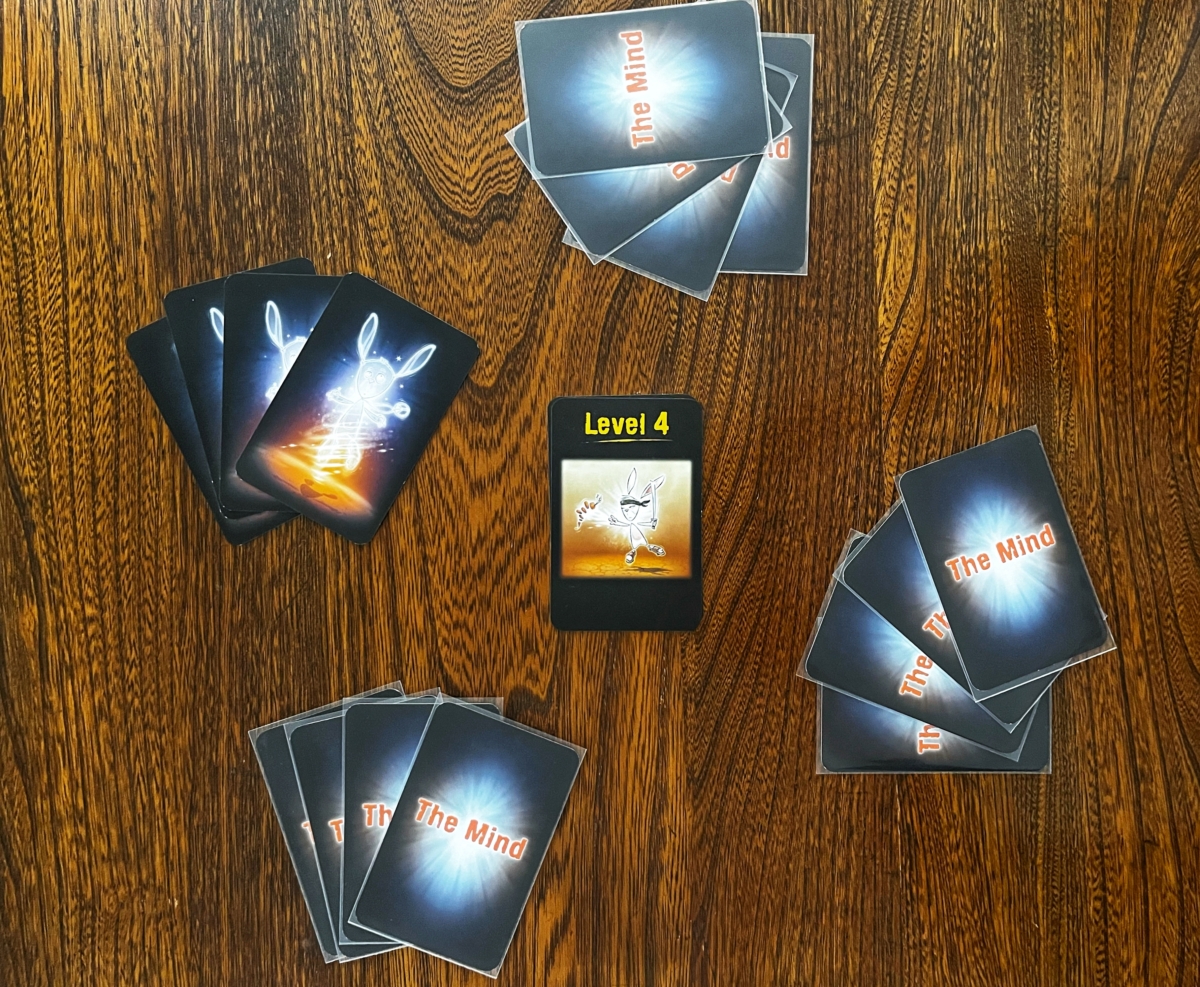
The players just completed level 3, so for level 4, they each have a hand of 4 cards.
Errors
During a level, if someone plays a card higher than a cardyou’re holding, you must announce it and the game is paused immediately. This is an error and as a penalty, the team loses 1 of their Lives.
Then, players discard any Number cards they’re holding that are lower than the value that was played.
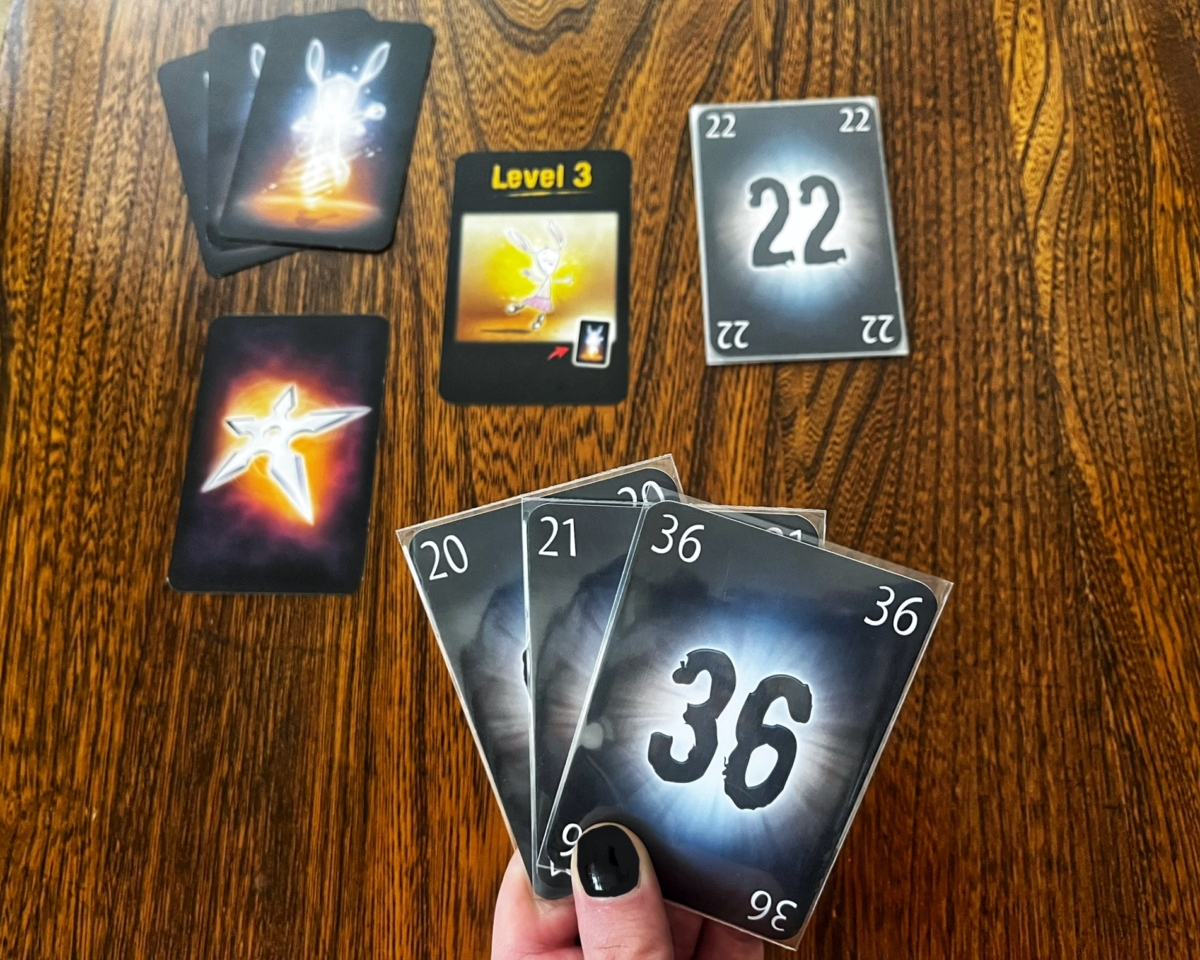
An error has occurred during play since this person is holding cards lower than the Number card played (22). This player discards their 20 and 21 cards, and the team loses 1 Live card.
The players then continue playing the current level, beginning by refocusing their concentration.
Throwing Stars
At any point during a level, a player can raise their hand to indicate that they’d like to use a Throwing Star.
If everyone agrees, they discard the team’s Throwing Star, then all players discard their lowest card faceup so that all players can see.
Doing so is helpful because it gives all players information about the other cards each of them holds.
Then players regain their concentration and continue playing the level.
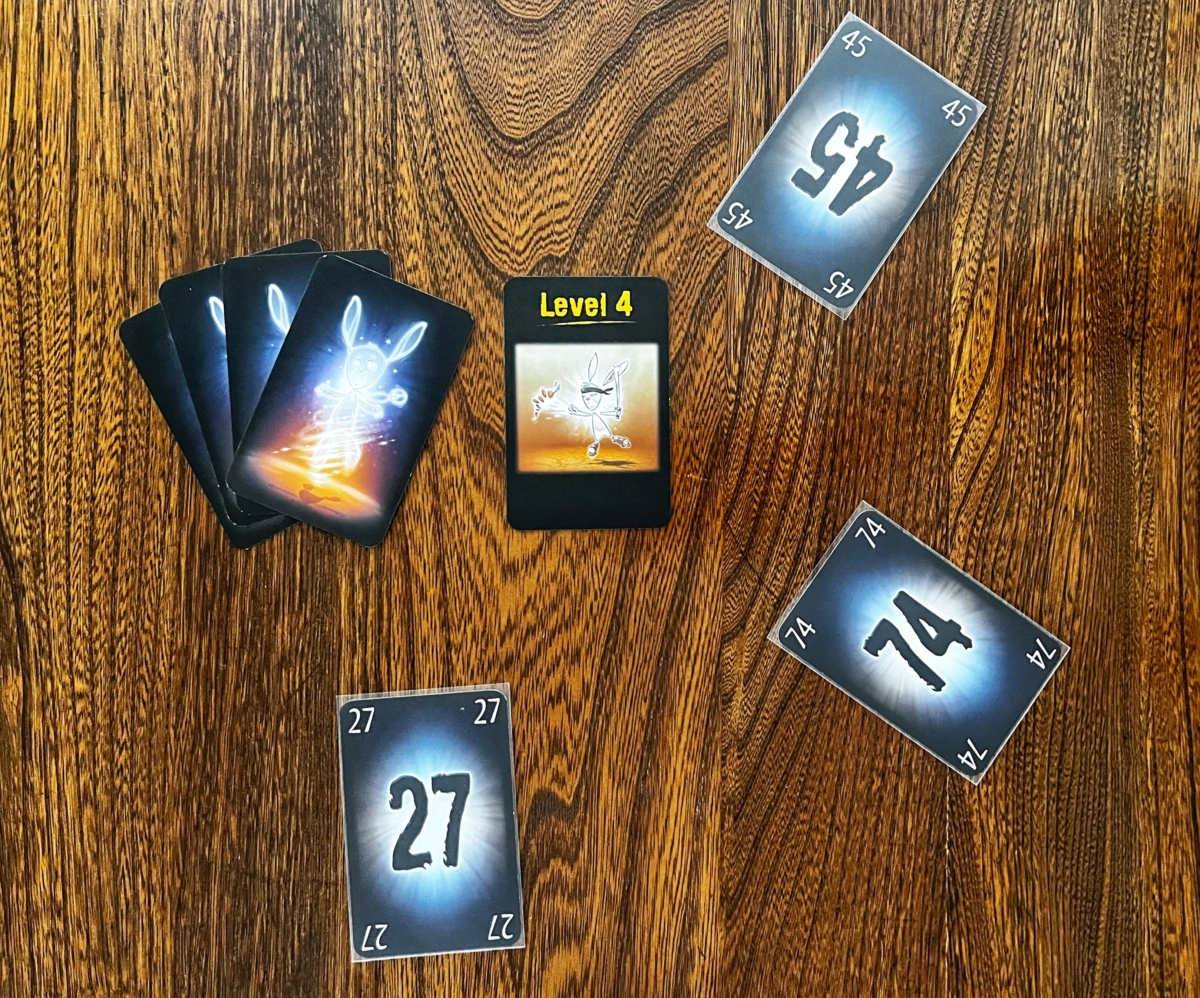
A player raised their hand to use a Throwing Star. Everyone agreed and discarded their lowest value Number card faceup from their hand (a 27, 45, and 74).
End of Game
The game ends when either:
- The players have completed all the Levels in their stack or
- They lose their last life.
The former is a victory for the players, while the latter is a defeat.
The Mind Review
When The Mind was nominated for the prestigious Spiel des Jahres award (German Game of the Year) in 2018, there was a lot of debate about whether it was actually a game or simply an activity.
Regardless of where you fall in this discussion, it’s hard to deny just how clever and interesting The Mind is.
But these qualities aren’t always apparent at first.
That’s because, thanks to the way The Mind was designed, its cleverness sort of creeps up on you. The first level or two are usually a breeze to get through.
After all, the odds that players will have Number cards with values close together are quite low, so it’s easy to play them out without losing Lives.
Those early levels, though, are needed to understand the rhythm of each player, to become more synchronized as a team — or, as the game says, “to become one.”
Without going through these early levels and developing that sense of knowing when the right moment to play a card is, you will not be able to get through the higher levels.
This is The Mind’s magic.
Concentration
The idea of acting out the “Concentration” step before starting to play a level seems silly at first, but it is such an essential part of The Mind.
It brings everyone to the present moment, away from distractions, and syncsyou up with the other players without you even realizing it.
It’s also a wonderful tool to have at your disposal during gameplay in case of an emergency or disruption.
Luck
There is, of course, some luck involved in the game. You may have times when the values of the players’ Number cards are quite spread apart and others where you keep getting sequential numbers.
This is simply part of the game; learning to work with what you’re dealt is all part of the experience.
Card Quality
While I love The Mind, I don’t like the cards, which are pretty thin and feel cheap.
Aesthetically, the design is neat, and I like its dark look. However, because the cards have a black border and their quality isn’t great, the edges show wear after only a couple of plays.
If you can, invest in some card sleeves for your copy to increase the life of your game.
Final Thoughts
Whether you consider it a game or merely an activity, The Mind is a real delight. It’s a fascinating experience to take part in — but also fun to observe in action.
You might also be interested in the following:

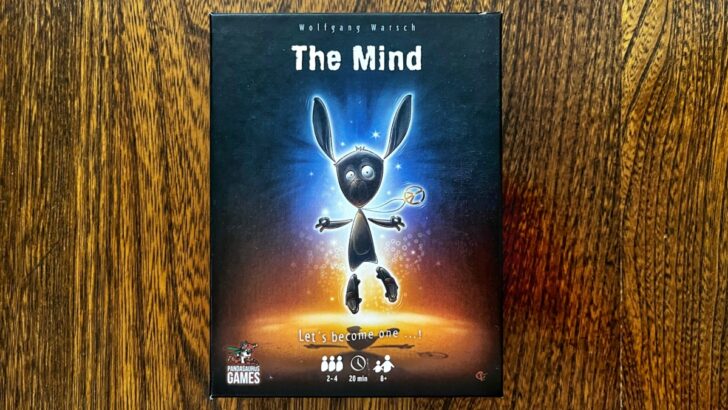
Underwater Cities Review — Who Needs Outer Space?
Monday 26th of June 2023
[…] The Mind Review […]
Ticket to Ride: New York Review — Little Plastic Taxis
Monday 26th of June 2023
[…] The Mind Review […]